Search results for "fc coins cheap ps4 Besuche die Website Buyfc26coins.com. Alles tip top..ouzE"
23 Results
Page: Custom Homes
Our designs can be customised to suit your needs. Even if you have an odd-shaped block. Why engage a private architect to design your custom home, when we can deliver it for you?
Page: Dual Occupancy
Building a dual occupancy home, whether it is a granny flat, duplex or involving the subdivision of the property, can unlock equity in your land and help with wealth accumulation.
News: Show Your Colours at a Beechwood Display Home
To celebrate Beechwood’s new partnership with the Newcastle Jets, and our other sponsorships of Sydney FC and NRL Newcastle Knights, Beechwood Homes is sharing the joy with our Show Your Colours Promotion.
When you visit a Beechwood Display centre or Sales centre in Sydney, North or South Coast, wear any A-League or NRL jersey, mention the Beechwood Newcastle Jets sponsorship and you’ll get a discount of $500 on top of any other offer when you first request a tender. The discount will increase to $1,000 if you are wearing a Newcastle Jets, Sydney FC or Newcastle Knights jersey at the time.
Beechwood have display homes in Sydney at HomeWorld V at Kellyville, Oran Park Town Village at Oran Park and HomeWorld at Gledswood Hills. In Northern NSW, Beechwood display homes are located at Watagan Park Estate at Cooranbong and at Hunter HomeWorld, Berry Park. On South Coast NSW, at Housing World Shell Cove and Twin Waters South Nowra.
Beechwood Business offices are located at Unit 2, 25-27 Redfern Street, Wetherill Park, Unit 4, 26 Balook Drive, Beresfield (off Weakleys Drive), Corner Cambewarra Road & Princes Highway, Bomaderry and 10 Ralston Drive, Orange.

News: 10 lessons we've learnt about working from home
Like so many people around Australia, at Beechwood Homes many of our office-based staff have shifted to working from home during the COVID-19 pandemic. Here’s what we’ve learnt from our own team and from our customers about working from home.1. Set up a separate areaOur number one tip for working from home is to set up a separate work area if you’re able to. Ideally, this would be a separate room in your home with a door so you can shut out the noise of your household but setting up a study nook could work equally well.For those starting a home business or shifting permanently to working from home, you might consider building a workspace away from the main house. A Granny Flat could be a fantastic way to create that separate space, while also being multi-purpose in the long run, with the opportunity to rent the space out or house relatives down the track.2. Establish a routine and stick with itOne of the greatest, and yet also one of the trickiest, parts about working from home is the potential for flexibility. If, for example, you find yourself having to supervise your children’s home schooling, you might segment your day to fit in with those commitments and work in time blocks rather than a typical 9am to 5pm work day. However, if you don’t establish a routine and stick with it, that flexibility could quickly turn into chaos.Make sure to create a schedule that works for your household and make your colleagues and family aware of it. If you’re lucky enough to have a separate workspace either within the house or in a granny flat, you could even have a sign on the door to indicate whether your office is ‘open’ or ‘closed’.3. Get organisedStaying organised is one of the most difficult aspects of working from home, because the structure, storage and systems of a typical workplace are usually missing.To stay on-track with your work without getting overwhelmed, organisation will be key. Get organised by creating specific filing systems, schedules, and task lists that help you feel in control. Depending on your occupation, you may also want to create a specific storage area for your work, especially paperwork that can easily get lost among household correspondence.4. Dress the partAlthough working from home allows you to dress in more comfortable clothing than you may in an office, you may want to create a pseudo uniform or put limits on what you can wear during your work hours.Sitting around in your pyjamas all day might make you more comfortable, but you probably won’t feel like a professional worker and could make it harder for you to switch off from work at the end of the day. You’ll also look pretty silly when you participate in video calls.5. Switch off at the end of the working dayMaintaining that work-life balance can be hard when your work is always right there staring you in the face. It’s important, however, not to get into the habit of working all day and night and having no leisure time. Train yourself to switch off your computer and other devices when you finish your day and don’t constantly check emails or other messages.This is easier to do if you have a separate work area. The act of physically leaving a work-specific room or area and shutting the door behind you can help you mentally break away from the daily grind as well.6. Take regular breaksWhen making your schedule consider working in smaller spurts and allowing yourself time to get up from the computer to stretch. Without co-workers around, you may forget to take time away from your desk but doing so will help you to re-set both physically and mentally, improving your efficiency.7. Exercise and stretchWhen you do take breaks make sure you stretch and exercise, even if it’s just walking around your house, or visiting the kitchen. If you live in a double-storey house, make use of your stairs to do an impromptu workout.Exercise stimulates your body and brain and will make you more alert and energised, which means you’ll be ready to dive back into work after your break.8. Use technologySince the majority of your work will likely be done on your computer, you will need to be computer savvy. Ensure that you have remote access to your company server and logins for programs you routinely use. Your employer may be able to loan you some equipment to use at home and provide assistance in setting it up.9. Stay connectedMake sure that you’re readily available via email, phone, text, instant message, or conference call. When in doubt, over-communicate until told otherwise. Be vocal about your activities and achievements while away from the office.10. Learn how to deal with distractionsPets, TV, and family members are just a few distractions you’ll encounter when working at home. Having a separate office space can help minimise distractions, but ultimately it is up to you to stay focused.Want to know more about Beechwood Homes?With many years’ experience in building homes in NSW, Beechwood can work with you to design your new home around how you want to use it, including home office space, or even a granny flat for a permanent home office. Contact us today to start your Beechwood Homes journey.

News: Happy New Building for First Home Buyers
In great news for first home buyers, the Federal Government’s First Home Loan Deposit Scheme is expected to launch on 1 January 2020.
What is it?
This Scheme aims to support eligible first home buyers to enter the property market and purchase their first home faster.
How does it work?
At the time of writing (November 2019), some details are still a little sketchy, but here is what we know so far:Most lenders require first home buyers to come up with a 20% deposit in order to be considered for a home loanQualifying first home buyers taking out their first home loan will be able to gain finance with a deposit as little as 5%, with the government acting as the guarantor for the remaining 15%Although the government is being the guarantor for the remaining 15% of the loan, first home buyers still have to eventually pay that money backLenders will still do their normal checks on a borrower's financial situation, but the Scheme makes it easier for first home buyers to get a loan without having saved for a full 20% depositThe number of applicants under the Scheme will be capped at 10,000 each year on a first-in best-dressed basisThe Scheme is expected to apply to owner-occupied loans on a principal and interest basis over no more than 30 yearsThe Scheme is expected to commence on 1 January 2020 and will be administered by the National Housing Finance and Investment Corporation (NHFIC)There are price thresholds on the value of the property involved of $700,000 in the wider Sydney metropolitan area and some major regional centres and $450,000 in other areas in NSW (see below)First home buyers will need to meet a number of eligibility criteria in order to have access to this scheme
So, who is eligible?
People who are:18 years of ageAustralian Citizens onlyNever owned a home before in AustraliaSingles must earn a taxable income of $125,000 or less per yearCouples who have a combined income of $200,000 or less per year will be able to access the scheme.
What are the price thresholds?
There are price thresholds on the value of property involved. At present:There is an upper limit of $700,000 in the wider Sydney metropolitan area, Illawarra (Wollongong), Newcastle (Lake Macquarie and parts of Central Coast)Other areas in New South Wales have an upper price threshold of $450,000The boundaries are still under review, but at the moment the higher limit of $700,000 extends to areas such as Bargo, Mount Victoria, Gerringong and BeresfieldThere is a website https://www.nhfic.gov.au/what-we-do/fhlds/eligibility/ where you can enter the area where you are thinking about building and it advises the likely threshold level as well as other information about the Scheme
What next?
Applications for the Scheme are not yet open.NHFIC is currently conducting a procurement process to establish a panel of residential mortgage lenders to participate in the Scheme.
Whatever you are looking for in a new home, make sure you speak to Beechwood about your options.
Beechwood specialises in helping first home buyers to get into their first home. Beechwood will be there to help every step of the way and aims to provide peace of mind during the entire building process with our Pulse Information Portal.
We have display homes throughout greater Sydney, Newcastle, Central Coast and South Coast.
Beechwood builds along the New South Wales coast from Port Macquarie to past Narooma and inland to areas such as Scone, Lithgow and Goulburn. As Beechwood offers flexibility and value, first home buyers can make their first home, their dream home.
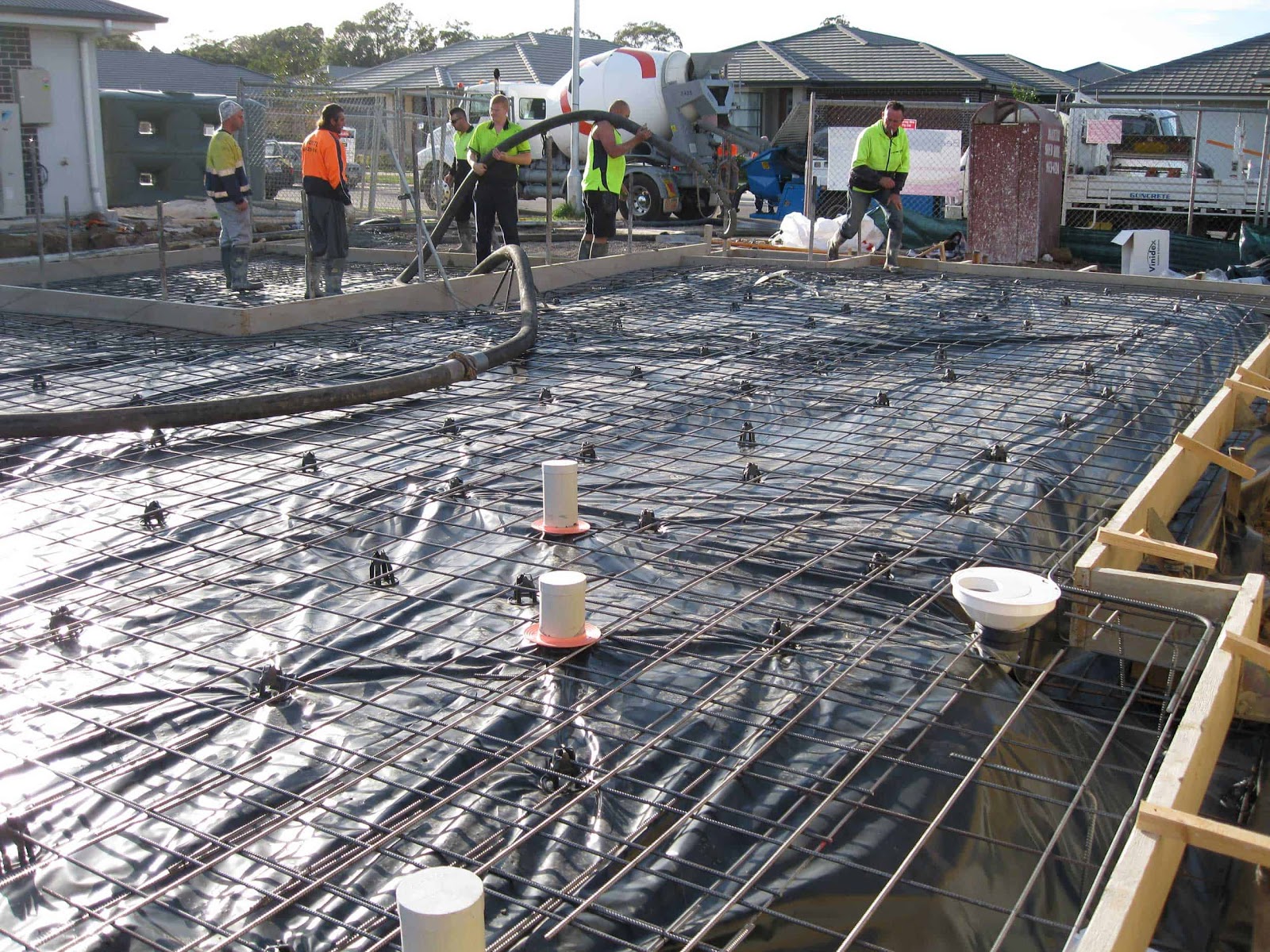
News: Escaping the city crush with Waterford County and Beechwood Homes
Nestled in Chisolm, one of the Hunter region's newest suburbs, is Waterford County, an estate that boasts a relaxed and contemporary country lifestyle.
Beechwood Homes are proud to build our quality, affordable homes within the beautiful Waterford County Estate. We are currently offering a range of Home and Land packages for Waterford County that feature some of our most popular home designs including the Verdelho, the Merlot, and the Cienna.
Waterford County is an estate that represents a growing move to expand our residential areas to those beyond the metropolitan restrictions. With larger land sizes, more affordable prices and idyllic surrounds, this area is growing in popularity for those in every walk of life. First Home Buyers, investors, and families are all recognising the benefits of living a country lifestyle, with more freedom, time, and relaxation.
Enjoying a 'tree change' lifestyle doesn’t necessarily mean you will be limiting the prospects for your or your family in the future. Every opportunity is available to the Waterford County residents with employment, education, health, and leisure options all within an easy distance of the estate. All surrounded by views of the gorgeous Wallarobba Ranges, active wild life, and estate facilities.
To take a look at our range of Home and Land packages available at Waterford County, Chisolm simply check out our Home and Land page or give us a call on 02 9616 0999. If you would like to contact Waterford County about their range of lots available or the fantastic lifestyle opportunity they can provide, please take a look at their website. Or why not take a drive to experience the peacefulness of the estate for yourself? It's around a two hour drive from Sydney and you will not regret the scenery.

News: Beechwood Homes kicking goals for charity
Beechwood Homes is proud to announce that for every goal Sydney FC score for the remainder of the A-League season, Beechwood Homes will make a donation of $1,500 to be split between two of Sydney FC’s charity partners, beyondblue and Football United.
The tally currently stands at $4,500 following Sydney FC’s 3-0 win over Wellington Phoenix.
beyondblue is working to reduce the impact of anxiety, depression and suicide in the community by raising awareness and understanding, empowering people to seek help, and supporting recovery, management and resilience.
Football United is a world leader in using football for social development. Football United aims to build capacity of communities and improve the skills of people in diverse areas that includes high proportions of refugee, migrant and Aboriginal Australian children, youth and families.
Beechwood would like to once again thank Jacques Faty and Shane Smeltz for their outstanding performances and celebrations against the Phoenix and kicking off this great initiative.
Read more at http://www.sydneyfc.com

News: Beechwood renews support for Sydney FC
Beechwood has extended and expanded its sponsorship of Australian A-League soccer team Sydney FC.
The new agreement, effective from the beginning of this season’s campaign, will see Beechwood’s logo displayed on the sleeve of the teams playing shirts.
Beechwood has been one of Sydney FC’s major partners for 2013/14 A-League season, and they are upgrading their current coaching staff and technical area sponsorship with the club to become a premium partner.
Vic Cavasinni, Beechwood Managing Director, added: “We have had an excellent relationship with Sydney FC this season and the partnership is a good fit to our business.
“We are looking forward to more success in the years to come, and helping to support the big and bold ambitions of Australia’s premier football club.”
Tony Pignata, Sydney FC chief executive officer, commented on the agreement: “We are delighted to be extending our relationship with Beechwood Homes.
“This is the third, major, long term corporate sponsorship Sydney FC has signed in the last month and it will give the club a firm footing to succeed with our ambitious plans in the next few years.”
The sleeve sponsorship between Sydney FC and Beechwood is due to begin on July 1 2014 and will run until the end of the 2016/17 season.

News: Setting the benchmark: Caesarstone
The name alone automatically conjures a distinct impression of quality, class and the highest level of finish. Caesarstone has long-earned it’s reputation by consistently delivering the highest standard of quality for nearly 30 years.
The Caesarstone website is a great source of inspiration and now has a Visualiser that customers can use to view the wide range of finishes, textures and colours available. The kitchen visualiser has an extensive range of options to view different splashbacks, benches, islands, walls and even floors and cabinets.
Designing your dream bathroom has never been easier with the bathroom visualiser where you can choose wall cladding colours for your shower and room, shelving, vanity tops and even the texture and colour of your bathtub.
Beechwood Homes is proud to partner with Caesarstone for our customer’s kitchen bench tops and bathroom vanity units, providing a source of pride within their new Beechwood home.

News: The most understated room in the house: Ideas for the perfect laundry
Image shown above is the laundry in Beechwood Homes' Seacrest design, on display at Housing World Shell Cove.
One of the most important things to think about when designing any practical room such as a laundry or kitchen is the roles of form and function; making something look good, but still work well is the dream of every home designer.
Many people often forget about the humble laundry when planning their dream home, some compromise on space while others overlook the fundamental need for storage. It is definitely a difficult balance to strike! A good laundry rarely receives the praise it deserves, a good mixture of storage and bench spaces support the washing and drying appliances meaning that the chore of laundry is that little bit easier every time.
Some great possibilities include pull out folding tables and fold down ironing boards, as they make the folding and sorting of clothes a breeze. Ensuring there are adequate power points is a common after thought, so considering how many appliances will need power, plus any extras (sometimes you might want to charge a phone or plug in some music) is a good tip. Also, clothing racks that let you hang and air clothes are worth their weight in gold if the weather is a little damp out. These can be installed underneath a set of cupboards or over a folding bench.
Click here to view the virtual tour of the Seacrest by Beechwood Homes
Big drawers that can hold baskets or built in laundry buckets are some more fantastic ways to keep the laundry area looking neat and tidy. Of course it won't always so a big sink for soaking whites and washing off mud is another handy feature.
There really are so many options when it comes to creating the perfect laundry for your dream home.
Beechwood Homes have a broad range of home designs, all of which provide an ideal amount of space for your laundry requirements. However it is always good to think of your own personal needs to ensure your newly built project home's laundry is tip top! Our FlexiBuild option means that all our designs can be tailored to suit your family's needs.
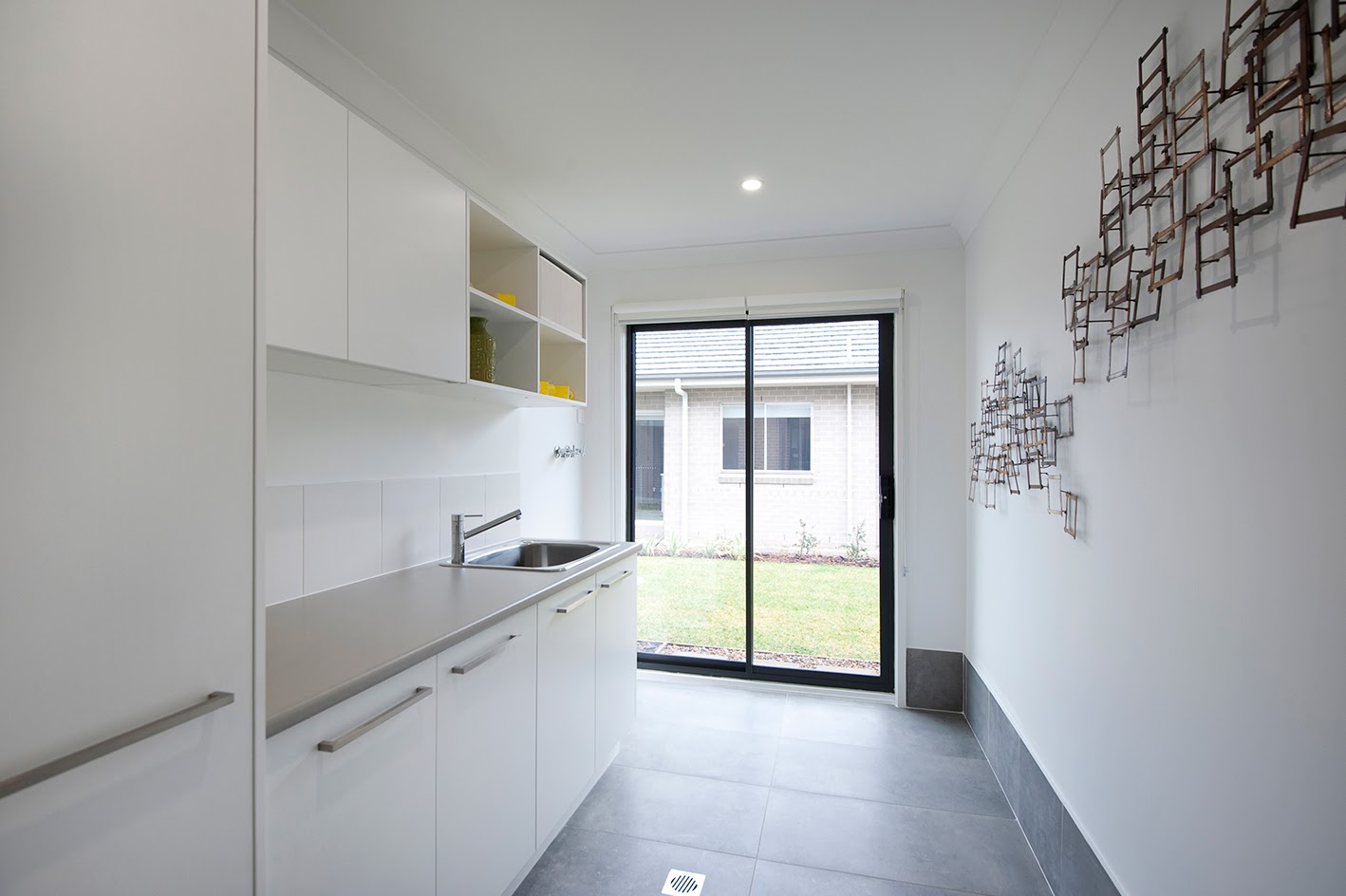
News: How Much Does It Cost To Build On A Sloping Block?
As a company designing and building houses for the past 40 years, we can tell you with certainty that the Earth isn’t flat. Rises and depressions of varying degrees are in every landmass. Looking at a topographical map of Australia, you’ll notice that roughly two-thirds of the country sits on an elevated area or next to it.As a result, sloping blocks are as common as flat sites. They pose a challenge to designers and builders, as standing or walking on an incline isn’t exactly comfortable. The extra procedures builders have to do make building on a sloping block cost hefty, with one estimate adding between AUD$40,000 and AUD$100,000 on top of the baseline price.But why does it cost that much? More importantly, is the extra cost worth it?Two Major ConsiderationsHome builders agree that they often consider two factors in determining the cost of building on a sloping block. The first is the gradient, which they calculate by getting the rise and run of the lot. For example, a lot with a 500-mm rise and 10,000-mm run gets a gradient of 1:20 or 5%.Home builders generally consider a gradient of less than 10% shallow, while a gradient of over 20% is steep. They also point out that the cost of sloping block homes can significantly increase for slopes of 15% and above due to more work being done and more safety concerns. Depending on the project, the cost increase can be between 30% and 50%.Some projects have built homes on gradients of up to 50% but necessitate complex foundations. This increases the amount of building materials needed, such as concrete and steel. Additionally, the foundations will be buried deeper underground for stability.The second consideration is whether the land is an upslope or downslope relative to the street or road. Upslope construction is more complex than downslope because it requires displacing more earth to make the site easier to build on. Either way, the displacement requires trucks and other heavy equipment.Runoff ManagementEven with robust foundations and proper cut and fill, homes on sloped blocks are still vulnerable to natural occurrences. If anything, homeowners should be more aware of how the land redirects rainfall from roof to drainage.Martin Brook, associate professor of applied geology at the University of Auckland, said urban development is as much of a factor in worsening natural disasters as climate change. Citing the recent landslides in Auckland brought about by record rainfall, he warned that the weight of any building could weaken the soil over time, regardless of the soil’s geological properties.It won’t take record rainfall for any developed slope to give way, so paying attention to a house’s runoff management is a must. You’d want to keep water away from the foundations to minimise the risk of a landslide and, ultimately, structural failure. But you also don’t want it to spill over to your neighbour or the road, lest you risk flooding.Two of the most common solutions are retaining walls and soakaways. Retaining walls keep the water out of the structure, while soakaways allow pooling water to permeate back to the ground. They’re a must for cut-and-fill and split-level site preparation. Meanwhile, soakaways are excavations partly filled with rocks or gravel. They’re usually made where runoff pools are, allowing water to permeate back to the ground. However, leaves and debris can also make their way and block the soakaway, so it must be protected with a filter.Worth It?Building a home is expensive enough, and making one on a sloping block adds to the expense. But is the latter worth it?Sometimes, a homeowner won’t have a say in the matter. As mentioned at the beginning, about two-thirds of Australia sits on an elevated area. The closer you want your home to the highlands, the more likely you’ll have to contend with sloped land. Even in a predominantly flat area such as Sydney, there are bound to be sloping blocks.However, there are ways to lessen the cost, such as building on sloped land bought for cheap. On top of that, it gives homeowners more options for implementing the features they want to see in a home. For example, sloping blocks enable home designs to add more windows, allowing people to see and appreciate their surroundings from more angles.Another advantage is that it permits the addition of a walkout basement, granting direct access to the outdoors instead of moving through the house’s interior. It adds more living space to a home without expanding horizontally.ConclusionBuilding homes on sloped land isn’t easy, nor is it affordable. Builders must ensure the building doesn’t disturb the earth it sits on, even if it means adding several more items to their to-do list. But when done by the book, it’ll be a home anyone can be proud to own.
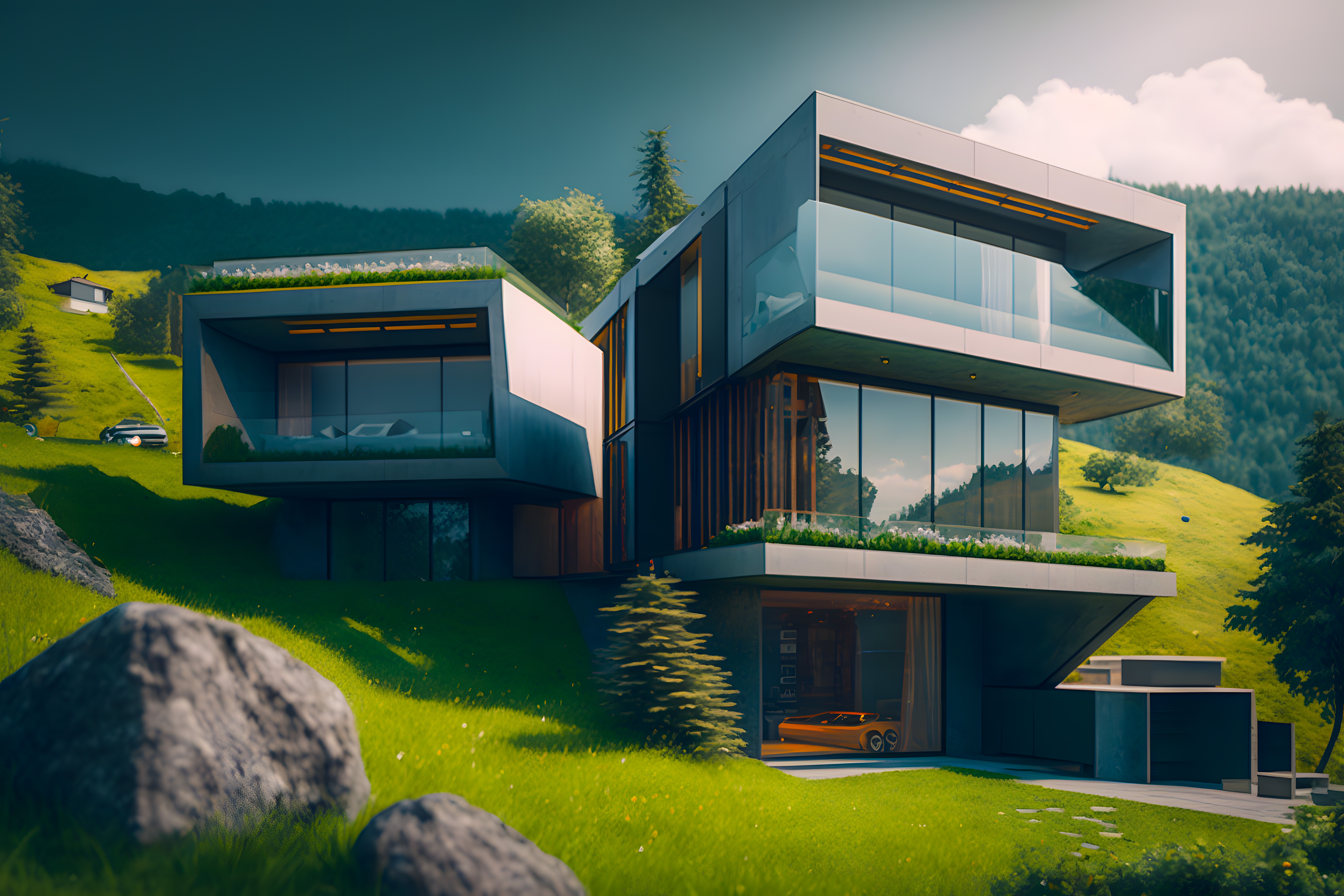
News: New website built with you in mind
Building with Beechwood is a great experience, with Beechwood giving you all the tools to make it easy for you to find what you want. So from the very beginning, our website, we want to make sure you find the right home for you.
That’s why our new website features a simple floor plan and house design browsing feature – just choose your style – single or double storey- your frontage size and price range for a wide range of designs and floor plans. You can even narrow it down by number of bedrooms. Easy While we have virtually hundreds of floor plans and house designs, we want to ensure that regardless of if you are viewing this on your smartphone, tablet or desktop; you get the best possible experience.
To see what I mean use your mouse to narrow the browser window by dragging it in and out. Better yet, grab your iPhone or tablet and see how the functionality adapts to your screen size every time. The content resizes and reorganizes based on your viewing dimensions.
There’s also a range of new information throughout the site to assist you in choosing the right house design and floor plan to suit you. We’d also encourage you to sign up for our newsletter to get interesting and important information directly into your in box.

News: Welcome to Beechwood Pulse, new Customer Communication Portal
We have been listening to customers and have created a system that will ensure you are kept up-to-date on every stage of your build. We call it...
Beechwood PulseBuild your home with peace-of-mindSo, Beechwood Pulse Portal, will it make your building experience easier?
Pulse gives you an open line of communication and mounds of information, to help guide you through your build. Our Beechwood Pulse Portal aims to break down the steps of the building process while giving you peace-of-mind.How does the Beechwood Pulse Portal work?When you have been through our display villages and found a design and façade that suits your family’s needs, you will sit down with one of our Building & Design Consultants to iron out your requested design elements. Once you are comfortable enough for us to go ahead with creating a personalised Tender for you, you will be provided with your very own Pulse login!
What many owner builders are unaware of, even if this is not their first build, is there are over 400 steps involved in building your home. We can’t simplify the building process, but we can simplify the steps into four stages:DesignPre-ConstructionConstructionMaintenance
Access to the Beechwood Pulse Portal will help you track various steps and stages in the building process right from the very beginning. Your dedicated consultant will help you with the process by ensuring your paperwork is up to date and all documents have been submitted correctly.
Then, once building has commenced, the Beechwood Pulse Portal will be your ultimate source for all information and updates. Your dedicated team members will update the Pulse Portal with progress reports. Find out moreFor further details on how the Beechwood Pulse Portal can help make your next building experience better, we recommend you:Visit the Beechwood Pulse Portal landing page at https://www.beechwoodhomes.com.au/pulseportalVisit the Beechwood Pulse Portal website at www.beechwoodpulse.com.au orspeak with one of our teams at our display homes!.

News: Six top tips for building on small or narrow blocks
Don’t like mowing the lawn? Well you’re in luck – today, blocks of land in new residential housing developments across Australia are around one-third to one-quarter the size they were in the 1950s, with much of the shrinking occurring post-2000.At Beechwood we have been building new homes in NSW for nearly 40 years. Over that time, we have seen greenfield median lot sizes drop to an all-time low, particularly in Sydney.This trend has moved particularly quickly over the last decade. In the late 2000s the blocks in Sydney we were building our new homes on were mostly 500 square metres or more; today we are regularly building new homes on blocks that are less than 400 square metres. And it’s not just new blocks of land either. Pre-existing blocks are also decreasing in size due to urban consolidation and a rise in the number of lots being sub-divided.With the demand for land in NSW, especially across Greater Sydney, pushing land sizes down and land prices up, matching the right block of land with the right new home design from the right builder can be a challenge for home buyers in Sydney and up and down the NSW North Coast and South Coast. To address this change, we created a range of innovative new designs for smaller blocks.How to maximise space on small or narrow blocksSmall blocks don’t necessarily mean small living spaces and uninspired homes. In fact, it’s quite the opposite. It all comes down to the home builder and the home design that you choose. Here are our top tips for building on small or narrow blocks. Tip #1: Make your space work harder for youLook for a versatile, compact floor plan where rooms can be used for multiple purposes. A popular modern design feature is the ‘great room’, a seamlessly blended, multi-functional space. Look for designs with a kitchen that flows into a great room that you can use as a living, dining and play space.Tip #2: Focus on spaciousness by embracing open plan livingLook for a clever and efficient design that fits on your block of land while still creating a generous sense of spaciousness through open plan living. The best designs for small or narrow blocks are those that open up your home by doing away with superfluous walls, doors and hallways.Tip #3: Embrace the light sideEnsure your design allows for light-filled spaces. The more natural light you have pouring in, the more spacious your new home will feel. Try and add windows where you can, especially on the north-facing side of your home, and consider installing skylights in areas such as bathrooms.Tip #4: Think about your doorsTo maximise the sense of space in your new home, you want to create a seamless transition between your indoor and outdoor living areas. The best way to do this is by using sliding doors or stacker doors that can be pulled right back to create a natural flow from indoors to outdoors.Tip #5: Choose a neutral colour schemeNeutral colour schemes contribute to a sense of spaciousness and calm. Avoid loud or conflicting colours and your home will feel all the warmer and truly inviting.Tip #6: Build up, smartlyA second level is an obvious choice for your small or narrow block, but also consider high ceilings and floor-to-ceiling windows to further add to the sense of size of your new home.Small or narrow blocks don't mean compromising on the things you really wantThe best tip for getting the most out of your small or narrow block of land is choosing a home design and a homebuilder that has both knowledge and experience with small or narrow blocks and unique home designs that maximise living spaces. The Edgecliffe Four 29 is one of many narrow block options available from Beechwood Homes. This double storey design requires a minimum block frontage of 11m (and only 10m where the block has a zero lot boundary) and offers over 270m2 of living space as well as a double garage. A NSW home builder with a differenceAs well as giving you the confidence of building with a long-standing NSW homebuilding leader experienced in multi-generational living and knock down rebuild, when you build with Beechwood you can closely track the progress of your new home with Beechwood Pulse, our customer communication portal. Visit one of our display home centres across Sydney, the North Coast and the South Coast to find out how we can help you.
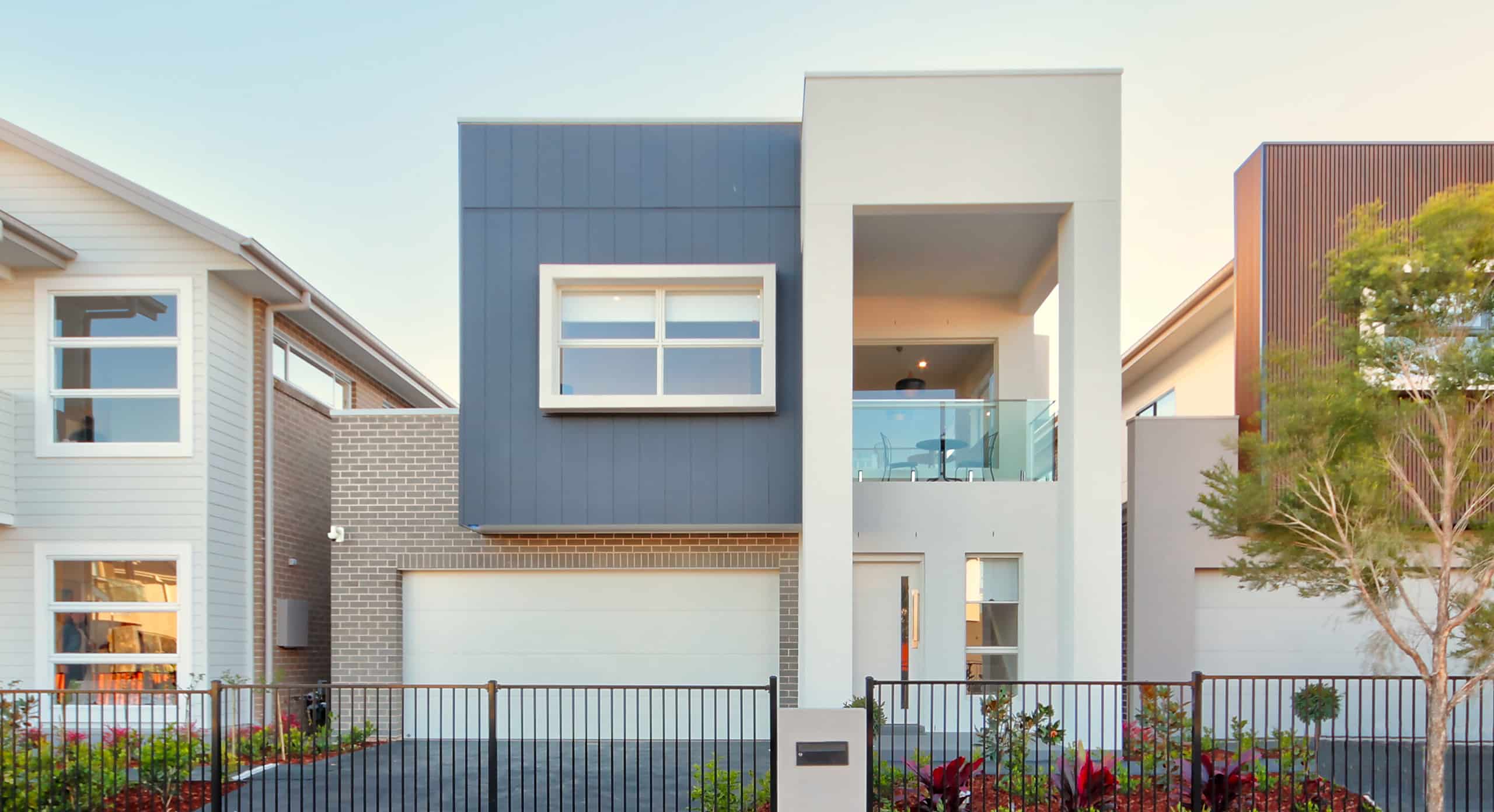
News: How to create the perfect palette for your home
Are you dreading your internal colours selection appointment, simply because you just don’t know what colours you want within your home? For some people, finding their own style for their home can come very easily, but for some of our clients, this whole point in the building process can be quite daunting.
With that in mind, I asked myself how do you get started choosing the base palette for your new home? To answer this question, I thought I would jump on to the Taubmans® website to get started. I have to say I was most impressed with the Colour Tips section on their website.
These tips introduce you to some colour basics to help you get started. Shayna Blaze, a popular Interior Designer, TV Presenter and also an Ambassador for Taubmans® has provided her 10 commandments of colour in a useful and easy to follow article.Getting yourself familiar with the basics and learning about warm and cool colours can also assist you when trying to sort out different colour combinations for your home.
The Taubmans® website also has interesting tips on how you can test a colour to see how light will affect it. I highly recommend reading this when choosing colours for your home. A colour may look beautiful on the swatch, but the colour may differ slightly when light comes into play.
If you just aren’t sure what style you want your home to portray, take a look at the Taubmans® Colour Game. This feature will ask you a series of questions and based off your answers will determine a colour palette that best reflects your personality. This was quite an interesting feature and will also give you a series of colour options that may help you get started when trying to create your own style.
Our team at Beechwood Homes have fantastic colour consultants who are there to help you transform your home into “your home”; but if you would like more information on the fantastic features Taubmans® have on their website to assist you further, visit their website www.taubmans.com.au
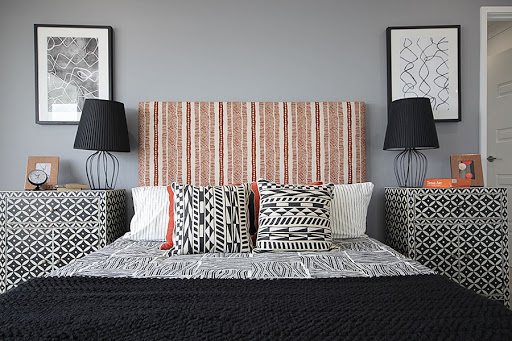
News: Building On A Sloping Block? Here’s What You Should Know
You might've wished to have a house on a hill, or a home offering the best view of the clearest skies or the city skyline, so you bought a sloped block to build on it the house you've always wanted. It's a choice that many people shy away from because, in most cases, they fear it's more challenging to construct on a sloping block than on a flat piece of land. That said, taking risks can bring great rewards. Even though you'll encounter unique difficulties constructing property on a slope, there are great advantages you'll enjoy. But remember that building on a sloping block requires working with great professionals to experience the benefits. If you've decided to construct a home on a sloping piece of land, this article is for you. Here's what you need to know: The Challenges Of Building On A Sloping Block A sloping block presents unique challenges. Some of these include: Drainage Difficulties Drainage in sloped land can be challenging if water pools under your house or at the bottom of the block. So, you need a builder to ensure proper stormwater runoff management. In this case, they may consider water tanks, perched water tables, or subsurface drainage. Accessibility Accessibility on a sloped block can be more challenging than on flat land. Getting into or out of the land during construction can also be difficult for builders using heavy machines. Therefore, you need to work with professionals to help you plan the best access points into your land in the early planning stages of construction. This way, they can identify the location of the driveway and other potential entryways. As a result, the building process will be easier. Also, you, other family members, and visitors will easily get into and out of your home after construction. Excavation Building on a sloping block requires more work than on a flat block. Usually, more preparation is needed since cuts and fill are likely. The earthwork on the block can be expensive and cause environmental impacts like erosion and drainage issues. As you've seen above, constructing on a sloping block has several challenges. However, you can overcome them by working with a good builder. The Advantages Of Building On A Sloping Block There are also advantages to building on a sloping block. Examples are: Good Drainage Drainage can also be an advantage. The slope could naturally prevent flooding by draining water away from your property. Natural Light A sloping block can bring more natural light into your home. Your builder will consider the nature of the slope and examine how they can leverage natural lighting. They'll also ensure the proper positioning of windows to prevent overheating and glare. Great Views A major advantage of building on a slope is enjoying great landscapes, sunrise, sunset, city, or neighbourhood views. It's something many homes built on flat blocks don't offer. And because of this, your home will have a higher resale value. Despite the challenges of constructing on a sloping block, there are great advantages, too. An excellent builder will do their best to develop an appealing home by taking advantage of your land's natural sloping position. Considering the benefits, you'll find that constructing on such a block outweighs the challenges. How To Find The Right Builder This article has emphasized the importance of having an excellent builder when constructing property on a sloping block. So, how do you find the right person for the job? Experience It helps to work with a more experienced builder. Such professionals have gained more expertise over the years. So, they can easily deal with the complex challenges of constructing on sloping blocks and deliver the best results. Proof of work You also need proof of work to see the outcome your builder will likely deliver before they start working on your property. So, it's best to ask for evidence of previous projects. If a builder has a website, check out testimonials and reviews from past clients. You can also request references you can call to know more about the expert's professionalism, timeline, performance, and general quality of work. Reliability You have a vision for your property and need someone to deliver or exceed your expectations. So, it's best to work with a reliable builder. The expert shouldn't let you compromise. Rather, they should listen to your vision, consult you in every step, and eventually turn your dream into a reality. The right builder makes a big difference when constructing on a sloping block. You can find one online or ask friends to recommend the best person they've worked with. Final Thoughts Many avoid building on a sloping block because they fear it's challenging. In this article, you've learned that, in truth, there are difficulties associated with constructing a home on a sloping block. That said, these are easy to overcome with the right builder. You've also seen the benefits of constructing on such lots. So, take advantage of them. Find a well-experienced and reliable builder who can provide proof of work. Such experts help you easily develop the best house on a sloping block.

News: The perfect colour palette for your new Beechwood home
Are you dreading your internal colours selection appointment, simply because you just don’t know what colours you want to use in your new Beechwood home? For some people, finding their own style can come easily, but for others, this part of the building process can be quite daunting.
A great place to start getting ideas for your colour palette is to visit one of Beechwood’s display homes across Sydney, and the New South Wales South and North Coasts. When Beechwood build a display home, our own colour consultants design the colour scheme for interior and exterior areas. They are experts at creating fantastic colour schemes that will match your vision for your new Beechwood Home.
Check out some of our other great articles
Spec. Homes VS House & Land Packages
How to choose the right floor plan
Development Applications VS Complying Development Certificates
Another option is to do your research online, utilising sites like the Taubmans® Colour Tips website for inspiration.
These tips introduce you to some of the colour basics to help you get started. Shayna Blaze, popular Interior Designer, TV Presenter and also an Ambassador for Taubmans® has provided her ‘10 Commandments of Colour’.
Getting yourself familiar with the basics and learning about warm and cool colours will assist you when trying to develop the colour combinations for your home.
If you still aren’t sure about the style you want your home to portray, take a look at the Taubmans® Colour Game. This creative tool gets you to choose a range of images and words that best fit your lifestyle to determine a colour palette that best reflects your personality.
The team at Beechwood Homes have fantastic colour consultants who are here to help you transform your Beechwood house into your very own “home”.

News: Visiting A Display Home: What To Expect
What To Expect When Visiting A Professionally Built Display Home
Building your new home is an exciting journey. It's a significant milestone, ushering in a new chapter with a brand-new place you can call your own. One of the first steps in this venture is visiting a display home.
Display homes are an interactive brochure for potential homeowners. They offer tangible experience, setting realistic expectations before you make a significant investment. These houses also showcase the quality, style, and full potential of the space, where you can visualize yourself living and growing.
Touring professionally built display homes provides valuable insights. To maximize this experience, here are x things to expect during your visit.
1. An Immersive Experience
Walking into a display home can be an immersive experience. You'll enter a fully furnished and professionally designed space that showcases the builder's vision at its best. It serves as a representation of living in an expertly built house.
When you visit a professionally built display home, you can expect cutting-edge design trends, top-of-the-line fixtures, elegant furnishings, and modern appliances. All these elements come together to create a stunning, aspirational space. This experience demonstrates the builder's capabilities and sparks ideas for your own home design.
2. Visualizing Your Lifestyle
One of the advantages of visiting a display home before building your own is the opportunity to visualize the practicality of the space. You can imagine yourself living in the space and maximizing every corner to suit your lifestyle and preferences.
Consider detailing your non-negotiable features prior to your display home visit. The list may include a large kitchen workspace for comfortable meal preparation, a comfy spot to enjoy your morning coffee or a playroom for the whole family. You may also visualize how the space would work when hosting social gatherings.
Visualizing your lifestyle in the home helps you set a standard to meet your needs and desires. These visions can serve as a guide for your chosen builder when choosing the best layout, design, and customization options.
3. Detail-Oriented Exploration
Visiting a display home offers a detailed exploration that goes beyond browsing pictures or watching virtual tours. This step allows keen-eyed aspiring homeowners to scrutinize specific features they want to incorporate into their brand-new houses.
As you explore a display home, you can assess the quality of construction, the type of materials used, and all the finishes. By taking a closer look at these details, you can evaluate the builder's expertise that you can expect in your own home.
Walking through each room gives you an idea of the layout's efficiency, including the natural flow from one area to another. Inspecting the crucial elements such as the flooring, walls, windows, doors, and cabinetry is also crucial to ensure the house's durability.
Visiting a professionally built display home lets you check the overall functionality and efficiency of the space. For instance, you can check the heating and cooling system, as well as the practicality of the kitchen and bathroom. This detail-oriented exploration allows an objective assessment of the home's aesthetic and practical elements.
4. Comprehensive Information Gathering
Professionally built display homes are a convenient hub for gathering information. As you visit, brochures, spec sheets, and price lists are readily available. These printouts provide detailed information about the house you're viewing and other designs offered by the builder.
When visiting a display home, you'll be greeted by knowledgeable staff and sales consultants. These experts can answer your questions about customization, construction timelines, pricing, and financing options. These conversations can help you gauge the builder's responsiveness and quality of customer service.
During your tour, don't hesitate to ask questions about construction materials, builder warranties, or any other concerns. You can also ask about maintenance tips should you choose to build the same home.
5. Comparing Different Builders
Visiting display homes is a significant step when choosing a builder that you can trust with your hard-earned money. Touring various house designs from different contractors can provide a wider perspective on styles, quality, and price points for accurate comparisons,
As you compare homes from different builders, consider both the tangible and intangible aspects. The tangible ones include the layout, design features, and quality of construction, while intangible ones involve the builder's reputation and customer service experience. Evaluating these factors can help you find the best contractor that aligns with your expectations and budget.
How To Plan Your Visit
Planning your visit can enhance your experience and help you get the most out of the display home. Here are some tips to help you maximize the tour:
• Do Your Research: You can check out the builder's website and browse their display homes beforehand. Doing so will give you insights into what to expect during your visit.
• List Down Specific Questions: Visiting a display home is the best time to ask specific questions about the design and construction process. You can maximize it by preparing these questions before the tour.
• Take Your Time: Set aside a schedule for your visit to avoid rushing. Take all the time you need to explore and evaluate every detail.
A well-planned visit to a prospective display home is crucial to your decision-making process; therefore, attention to small details is essential.
Conclusion
A display home visit offers a deeper engagement with your potential future living space. It's a chance to explore, question, and visualize. By setting expectations and planning your tour, you can make the visit more enjoyable and productive.

News: Visiting A Display Home: What To Expect
What To Expect When Visiting A Professionally Built Display Home Building your new home is an exciting journey. It's a significant milestone, ushering in a new chapter with a brand-new place you can call your own. One of the first steps in this venture is visiting a display home. Display homes are an interactive brochure for potential homeowners. They offer tangible experience, setting realistic expectations before you make a significant investment. These houses also showcase the quality, style, and full potential of the space, where you can visualise yourself living and growing. Touring professionally built display homes provides valuable insights. To maximise this experience, here are x things to expect during your visit. An Immersive Experience Walking into a display home can be an immersive experience. You'll enter a fully furnished and professionally designed space that showcases the builder's vision at its best. It serves as a representation of living in an expertly built house.When you visit a professionally built display home, you can expect cutting-edge design trends, top-of-the-line fixtures, elegant furnishings, and modern appliances. All these elements come together to create a stunning, aspirational space. This experience demonstrates the builder's capabilities and sparks ideas for your own home design. 2. Visualising Your Lifestyle One of the advantages of visiting a display home before building your own is the opportunity to visualise the practicality of the space. You can imagine yourself living in the space and maximising every corner to suit your lifestyle and preferences. Consider detailing your non-negotiable features prior to your display home visit. The list may include a large kitchen workspace for comfortable meal preparation, a comfy spot to enjoy your morning coffee or a playroom for the whole family. You may also visualise how the space would work when hosting social gatherings. Visualising your lifestyle in the home helps you set a standard to meet your needs and desires. These visions can serve as a guide for your chosen builder when choosing the best layout, design, and customisation options. 3. Detail-Oriented Exploration Visiting a display home offers a detailed exploration that goes beyond browsing pictures or watching virtual tours. This step allows keen-eyed aspiring homeowners to scrutinise specific features they want to incorporate into their brand-new houses. As you explore a display home, you can assess the quality of construction, the type of materials used, and all the finishes. By taking a closer look at these details, you can evaluate the builder's expertise that you can expect in your own home. Walking through each room gives you an idea of the layout's efficiency, including the natural flow from one area to another. Inspecting the crucial elements such as the flooring, walls, windows, doors, and cabinetry is also crucial to ensure the house's durability. Visiting a professionally built display home lets you check the overall functionality and efficiency of the space. For instance, you can check the heating and cooling system, as well as the practicality of the kitchen and bathroom. This detail-oriented exploration allows an objective assessment of the home's aesthetic and practical elements. 4. Comprehensive Information Gathering Professionally built display homes are a convenient hub for gathering information. As you visit, brochures, spec sheets, and price lists are readily available. These printouts provide detailed information about the house you're viewing and other designs offered by the builder.When visiting a display home, you'll be greeted by knowledgeable staff and sales consultants. These experts can answer your questions about customisation, construction timelines, pricing, and financing options. These conversations can help you gauge the builder's responsiveness and quality of customer service. During your tour, don't hesitate to ask questions about construction materials, builder warranties, or any other concerns. You can also ask about maintenance tips should you choose to build the same home. 5. Comparing Different BuildersVisiting display homes is a significant step when choosing a builder that you can trust with your hard-earned money. Touring various house designs from different contractors can provide a wider perspective on styles, quality, and price points for accurate comparisons,As you compare homes from different builders, consider both the tangible and intangible aspects. The tangible ones include the layout, design features, and quality of construction, while intangible ones involve the builder's reputation and customer service experience. Evaluating these factors can help you find the best contractor that aligns with your expectations and budget. How To Plan Your Visit Planning your visit can enhance your experience and help you get the most out of the display home. Here are some tips to help you maximise the tour: Do Your Research: You can check out the builder's website and browse their display homes beforehand. Doing so will give you insights into what to expect during your visit. List Down Specific Questions: Visiting a display home is the best time to ask specific questions about the design and construction process. You can maximise it by preparing these questions before the tour. Take Your Time: Set aside a schedule for your visit to avoid rushing. Take all the time you need to explore and evaluate every detail. A well-planned visit to a prospective display home is crucial to your decision-making process; therefore, attention to small details is essential.Conclusion A display home visit offers a deeper engagement with your potential future living space. It's a chance to explore, question, and visualise. By setting expectations and planning your tour, you can make the visit more enjoyable and productive.
